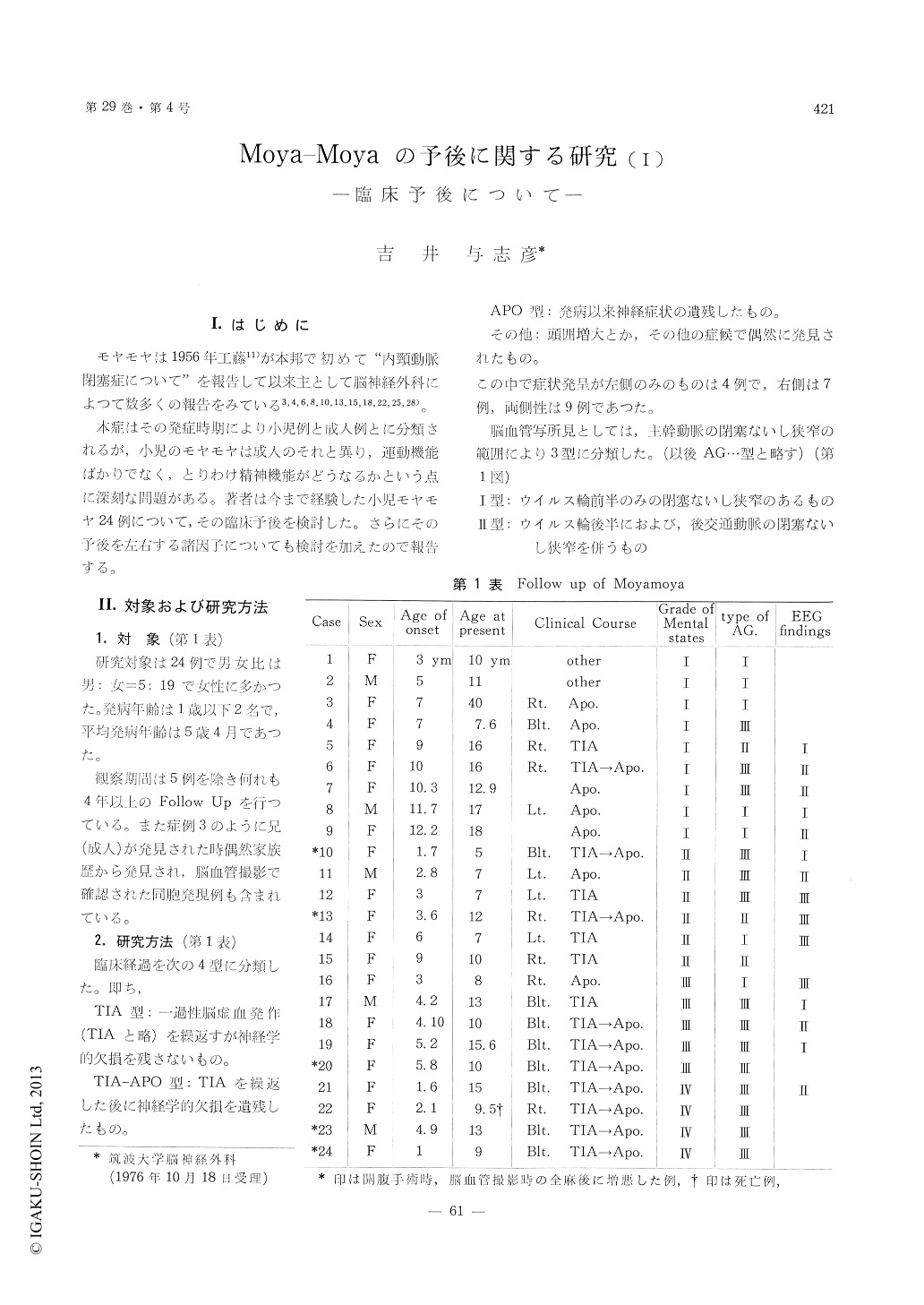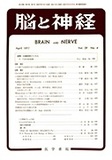Japanese
English
- 有料閲覧
- Abstract 文献概要
- 1ページ目 Look Inside
I.はじめに
モヤモヤは1956年工藤11)が本邦で初めて"内頸動脈閉塞症について"を報告して以来主として脳神経外科によつて数多くの報告をみている3,4,6,8,10,13,15,18,22,25,28)。
本症はその発症時期により小児例と成人例とに分類されるが,小児のモヤモヤは成人のそれと異り,運動機能ばかりでなく,とりわけ精神機能がどうなるかという点に深刻な問題がある。著者は今まで経験した小児モヤモヤ24例について,その臨床予後を検討した。さらにその予後を左右する諸因子についても検討を加えたので報告する。
The purpose of this paper is to report the result of clinical follow up studies of 24 cases of "Moya-moya" with the onset below the age of 13. Sex ratio is 1:4 (5 males and 19 females). Age at onset 2 below age 1, the oldest was 12 years and 2 months, the average age at onset was 4 years and 11 months. The average period of observation was 5 years and 9 months. Most cases were followed for more than 4 years.
Clinical course were divided into 4 different thpes; Type TIA, TIA-APO which has transient ischemic attacks followed by residual neurological deficit, Type APO and miscellaneous type. Angiographic findings were classified into 3 types, AG-Type Ⅰ: occlusion limitted to the anterior half of the circle of Willis; AG type Ⅱ; occlusion extending beyond the posterior part of the circle of Willis, and AG type Ⅲ: occlusion extending up to the proxymal portion of the posterior cerebral artery.
Many factors which might be influencing the prognosis of mental and physiological function were investigated and analysed. The following factor were noted to influence the prognosis: early onset, TIA-APO type clinically, symptoms suggesting bilateral or dominant hemispheric lesions, and an-giographycally widespread occlusion (AG type Ⅲ).
Furthermore, radioisotopic procedures could be replace angiography for follow up studies of patients with "Moyamoya".

Copyright © 1977, Igaku-Shoin Ltd. All rights reserved.


